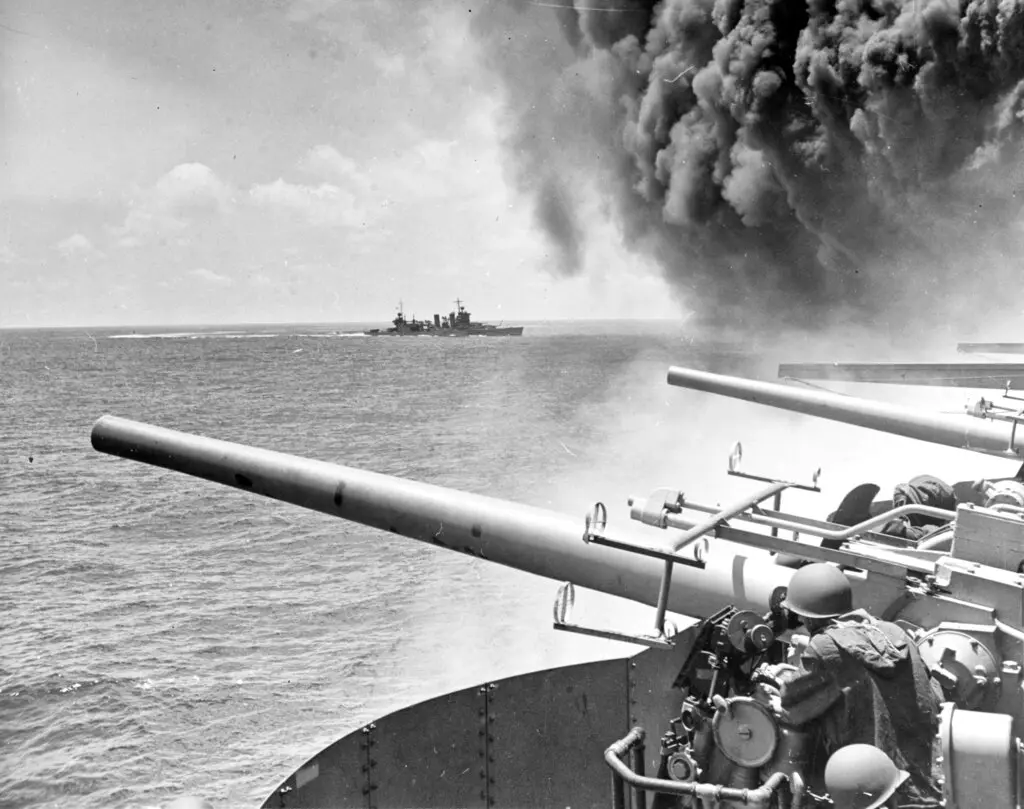On June 7, 1942, the Battle of Midway came to an end, marking a major turning point in World War II and one of the most decisive U.S. victories against Japan. The battle was fought between Japanese and American carrier forces near the Midway Atoll, a territory of the United States in the central Pacific. Midway Island, named for its location midway between North America and Asia, grew in importance for both commercial and military purposes in the 1930s, becoming a strategic location in the Pacific theater of the war.
The Battle of Midway began on June 4, 1942, with American military and intelligence forces working together to defeat the Japanese. Code breakers were able to decipher Japanese naval code, allowing American leaders to anticipate Japanese maneuvers and launch a surprise attack on the larger Japanese fleet in the area. This surprise attack led to the sinking of all four Japanese carriers that had participated in the attack on Pearl Harbor, representing a major victory over the Imperial Japanese Navy.
The success at Midway is often referred to as the turning point of the war in the Pacific, as the Imperial Japanese Navy was unable to overcome the loss of carriers and trained pilots. The defeat at Midway overturned the Japanese offensive in the Pacific and allowed the United States to begin offensive action in the region. The Battle of Midway is widely considered the most decisive U.S. victory of that period, with Midway Atoll being designated as a National Memorial to the Battle of Midway by the National Oceanic and Atmospheric Administration.
Midway’s importance as a strategic location in the Pacific continued to grow during World War II, and the American success at the Battle of Midway was a significant moment in the conflict. The battle marked the first major defeat of the Japanese Navy in over 50 years and was a resounding victory for the Allied forces. The Battle of Midway is remembered as a critical moment in the war effort, showcasing the determination and coordination of American military and intelligence forces in overcoming a powerful enemy.
The Battle of Midway is often compared to the invasion of Normandy on June 6, 1944, which was the largest military invasion in history by U.S. and Allied forces. Both battles played crucial roles in turning the tide of World War II and securing victory for the Allies. The success at Midway allowed the United States to gain the upper hand in the Pacific theater and continue offensive operations against Japan. The Battle of Midway is a significant and pivotal event in American military history, demonstrating the courage and strategic innovation of the U.S. forces in overcoming a formidable adversary.
In conclusion, the Battle of Midway on June 7, 1942, marked a major turning point in World War II, with the American victory over the Japanese Navy serving as a key moment in the war effort. The success at Midway allowed the United States to gain the advantage in the Pacific theater and eventually secure victory against Japan. The battle is remembered as a critical and decisive moment in American military history, showcasing the bravery and determination of U.S. forces in overcoming a powerful enemy.













